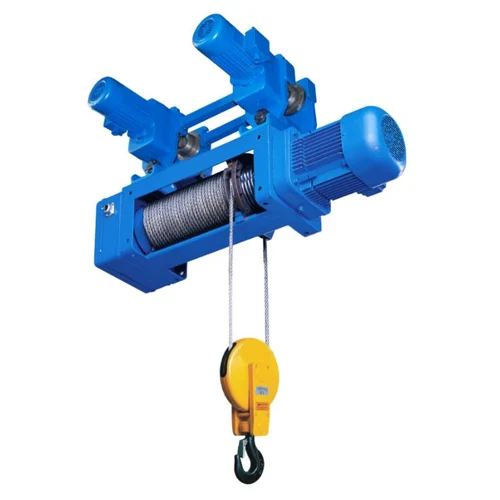Redefining Productivity – Electric Hoists in Crane Kits Manufacturing for Speed
Electric hoists have changed the manufacturing and development businesses, altogether affecting the advancement of crane kits. As the demand for more effective and flexible lifting arrangements increments, electric hoists have arisen as a key innovation that improves the usefulness and execution of crane frameworks. Customary hoists, frequently depending on difficult work or less proficient systems, have impediments in speed, security, and accuracy. Electric hoists, on the other hand, give a consistent and strong lifting experience that works on generally efficiency and lessens the actual stress on specialists. One of the essential benefits of electric hoists is their capacity to lift heavier burdens effortlessly and speed. The incorporation of electric hoists into crane kits empowers producers to foster cranes that can handle higher payloads, accordingly expanding their application across different areas, from development to manufacturing. Electric hoists are intended to work constantly with negligible free time, which is essential in quick moving conditions where time is cash. This dependability permits organizations to advance their tasks, smooth out work processes, and limit delays brought about by lifting shortcomings.

Besides, the appearance of polipsto eléctrico de cadena has prompted headways in control frameworks and robotization. Present day electric hoists frequently come furnished with modern control interfaces that improve the administrator’s capacity to unequivocally oversee loads. This accuracy is especially advantageous in delicate conditions, for example, in manufacturing offices where fragile materials should be lifted without chance of harm. The combination of savvy advancements permits administrators to screen loads progressively, changing lifting paces and points to guarantee ideal security and productivity. This capacity further develops efficiency as well as fundamentally upgrades working environment security by diminishing the gamble of mishaps related with lifting tasks. Electric hoists have additionally added to the advancement of smaller and lightweight crane kits. Conventional crane frameworks were in many cases lumbering and required broad space for establishment and activity. With the plan of electric hoists, producers can make crane kits that are more reduced and simpler to ship. This transportability opens up additional opportunities for development projects, especially in metropolitan regions where space is restricted.
Lightweight crane kits furnished with electric hoists can be handily moved and set up, diminishing the general time and cost related with lifting tasks. Furthermore, the energy productivity of electric hoists lines up with the developing accentuation on supportability in manufacturing. Electric hoists commonly consume less energy than their pneumatic or pressure driven partners, making them an all the more harmless to the ecosystem choice. As organizations progressively look to lessen their carbon impression, the utilization of electric hoists in crane kits upholds this target while likewise bringing down working expenses. All in all, the effect of electric hoists on crane kits advancement is significant and complex. By upgrading load limit, further developing accuracy, and advancing energy proficiency, electric hoists have changed the landscape of lifting innovation. As businesses keep on developing, the joining of electric hoists into crane kits will without a doubt assume a basic part in molding the eventual fate of manufacturing and development, driving development and productivity in lifting tasks.
